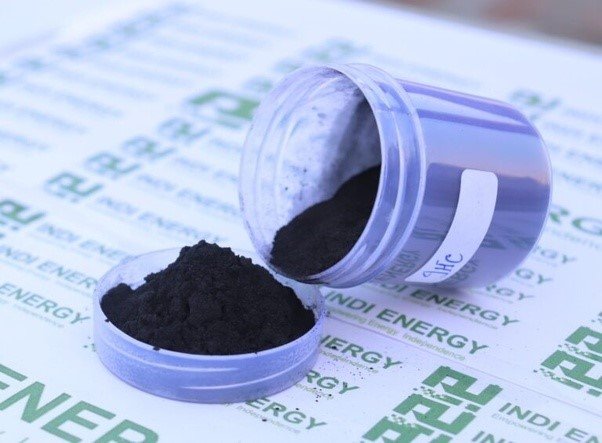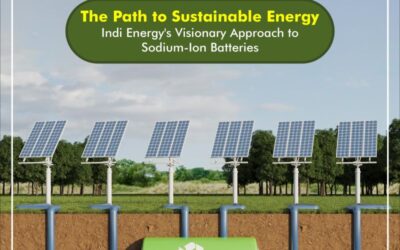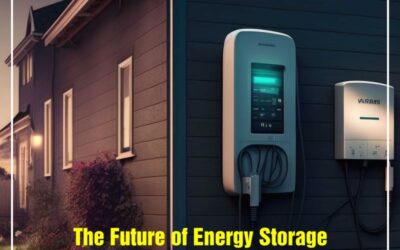
The future roadmap of Indi Energy’s sodium-ion batteries and whether they can replace
Are Indi Energy’s sodium ion batteries the key to unlocking a sustainable and safe future for us all? The answer is a big yes. Sodium-ion batteries are one of the safest battery technologies. Recently, Indi-Energy introduced several toys powered by sodium-ion batteries, which is an astounding feat in itself, showcasing our battery’s safety parameters.

The future of sodium-ion batteries isn’t just limited to toys; instead, they have a diverse field of applications. Solar and wind Grid storage? Check! Electric vehicles? Check! UPS/Inverter? Check! Household electrical or industrial? Check! Military and aerospace applications? A resounding check! In this blog, we will quickly discuss why sodium ion batteries are gaining prominence and whether they can replace lithium-ion batteries.
Why do we need an alternative to lithium-ion batteries?
The world is running against the clock to find renewable energy sources. Fossil fuels will run out, and even though there is still some time left before that happens, just look at the damage they are doing to the environment. This is the reason why the modern economy is pushing for affordable and eco-friendly energy sources.
Lithium-ion batteries are lightweight, compact in size, and have a high energy density, which makes them extremely suitable for use in electronics. It powers your laptop, cellphones, tablets, power tools, electric vehicles, and electric grids – so much so that the list of their uses is exhaustive. But this wide range of applications comes at a very high cost. And we are not just talking in monetary terms.
How bad is lithium mining for the environment?
Did you know that, although lithium resources are spread worldwide, the quantity of their reserve is small? Not only does it make transporting them a headache, but the lithium production cost alone costs over $20,000 per ton. More than half of the world’s supply of lithium is beneath the sea flats, in a location known as the ‘lithium triangle.’ A South American region that comprises parts of Chile, Argentina, and Bolivia. Lithium mining requires an astonishing 500,000 gallons, or 22 lakh litres per ton. Imagine that! It’s no wonder that mining has reduced half the water supply in this region. What’s even worse is that the impact of lithium mining does not stop there. Because lithium is not found in its elemental form, it also needs to be separated from other elements to make it usable, which is another huge cost to the environment. Soil, water, and air – nothing is safe from contamination. Recycling lithium-ion batteries may help in mitigating the adverse effects of the mining process, but it has stopped short in its tracks.
What are the problems with lithium-ion batteries?
When the barrier between the cathode and the anode of a lithium-ion battery ruptures, it can cause a breakaway thermal reaction from the lithium molecules. Since lithium is a flammable element, its molecules can reach extremely high temperatures within a short time and ignite or explode. An example would be the numerous posts we have seen about cell phones that have caught fire or exploded while they were charging or just in normal use. And this isn’t just limited to handheld devices; even electric vehicles have the same risk. Manufacturers have tried to address this issue and make them safer, but the risk is never truly gone.
Lithium-ion batteries were originally touted as a clean energy alternative to fossil fuels. From hand-held devices like smartphones and iPads to laptops and electric vehicles. It’s even powering up the International Space Station! A bit of an overachiever, aren’t they? But the scarcity of lithium has now started a quest for an alternative. Indi Energy’s sodium-ion batteries (Na-ion batteries) have the potential to fill the void because of their relative abundance, high performance, and low cost. It is the hero of sustainability we have been looking for.
Why are sodium-ion batteries the future?
Sodium is the 7th most abundant element in the world, found around 1200 times more than lithium, whose presence is concentrated in certain geographic locations just like oil. Additionally, the overall cost of extraction and purification is lower, and since supply already exceeds demand by a huge margin, this explains why sodium-ion batteries are on the cheaper side in comparison to lithium. Basic economics, isn’t it? Lithium ion has had years of a head start when it comes to production volume, which has enabled a reduction in cost as it has scaled. This is why sodium-ion technology needs to move past its state of infancy; resources have to be poured in. With that, raising awareness about this technology and highlighting its superior environmental credentials is also necessary.
Another important thing to remember is that the nature and properties of sodium-ion materials mean the chemistry is safer than Li-ion, not only when fully discharged but also when charged. Unlike lithium cells, which deteriorate with 100% discharge, sodium-ion batteries can be emptied to zero volts, making them safer to store and transport in the empty energy state.
On grounds of environmental impact, sodium ion batteries are gaining ground because they can provide the same range of applications as lithium-ion batteries with a smaller carbon footprint. Sodium and lithium belong to the same alkaline group, which is why their physical and electrochemical properties are quite similar. What’s even more interesting is that sodium-ion batteries do not require lithium, copper, cobalt, or nickel, which are prerequisites for lithium-ion batteries. Due to the natural abundance of sodium, Na-ion batteries have a lower production cost, which is approximately 30% to 40% lower than Li-ion batteries. Sodium-ion batteries are nonflammable, stable at higher temperatures, and have a performance output similar to that of Li-ion batteries.
Indi Energy’s sodium-ion batteries – Sustainable yet cost-effective.
As India’s first indigenous producer of sodium-ion batteries, Indi Energy is going one step further than the rest. Our sodium-ion batteries not only have the aforementioned qualities, but our anode, the negative electrode material, is composed of sustainably sourced hard carbon. Why should you care? The hard carbon we use is made from biomass, including agricultural waste like crop residues. Let that sink in for a moment.

Biomass like sodium is abundantly available, which makes our batteries completely sustainable! It took two years of development for Indi Energy to achieve one of the world’s highest performances in hard carbon for Na-ion batteries.
While sodium acts as the cathode, the anode for our batteries is made up of hard carbon, which is derived from biomass and is widely available as well. This is the green energy alternative that the world is looking for. The potential for Na-ion is there for everyone to see, and that explains why we recently raised a pre-Series A investment round. This not only shows the confidence the populace of India has in our technology but also allows us to expand the infrastructure so we can start mass-producing our proprietary rechargeable sodium-ion battery cells. Enhanced safety, lower raw material costs, worldwide availability, environmental sustainability, and high adaptability while offering the same level of performance as Li-ion batteries with even better low-temperature performances.
The sodium-ion battery sector will continue to grow rapidly in the coming years, with more investments and targeted R&D efforts. Although Li-ion batteries continue to be more widely used in consumer products, the day isn’t far off when sodium-ion batteries will begin superseding them. It has already done it in grid storage applications at the moment.
Indi Energy’s Sodium-ion batteries offer a never-before-seen balance between sustainability and affordability. The lithium-ion battery era is coming to an end, as Indi Energy’s sodium ion batteries hold the key to a sustainable and safe future. Is sodium-ion technology a game-changer? A resounding yes!!!







